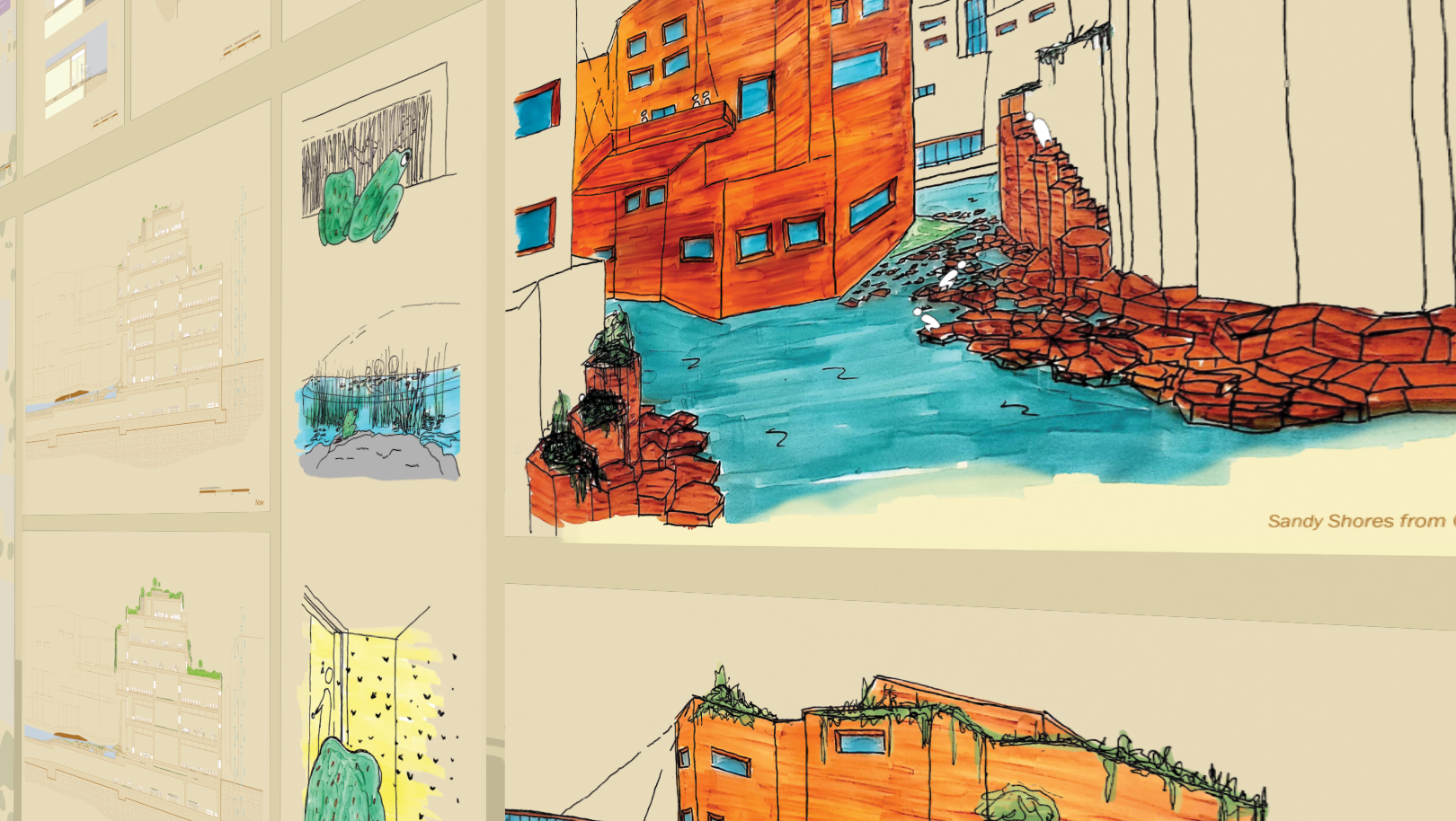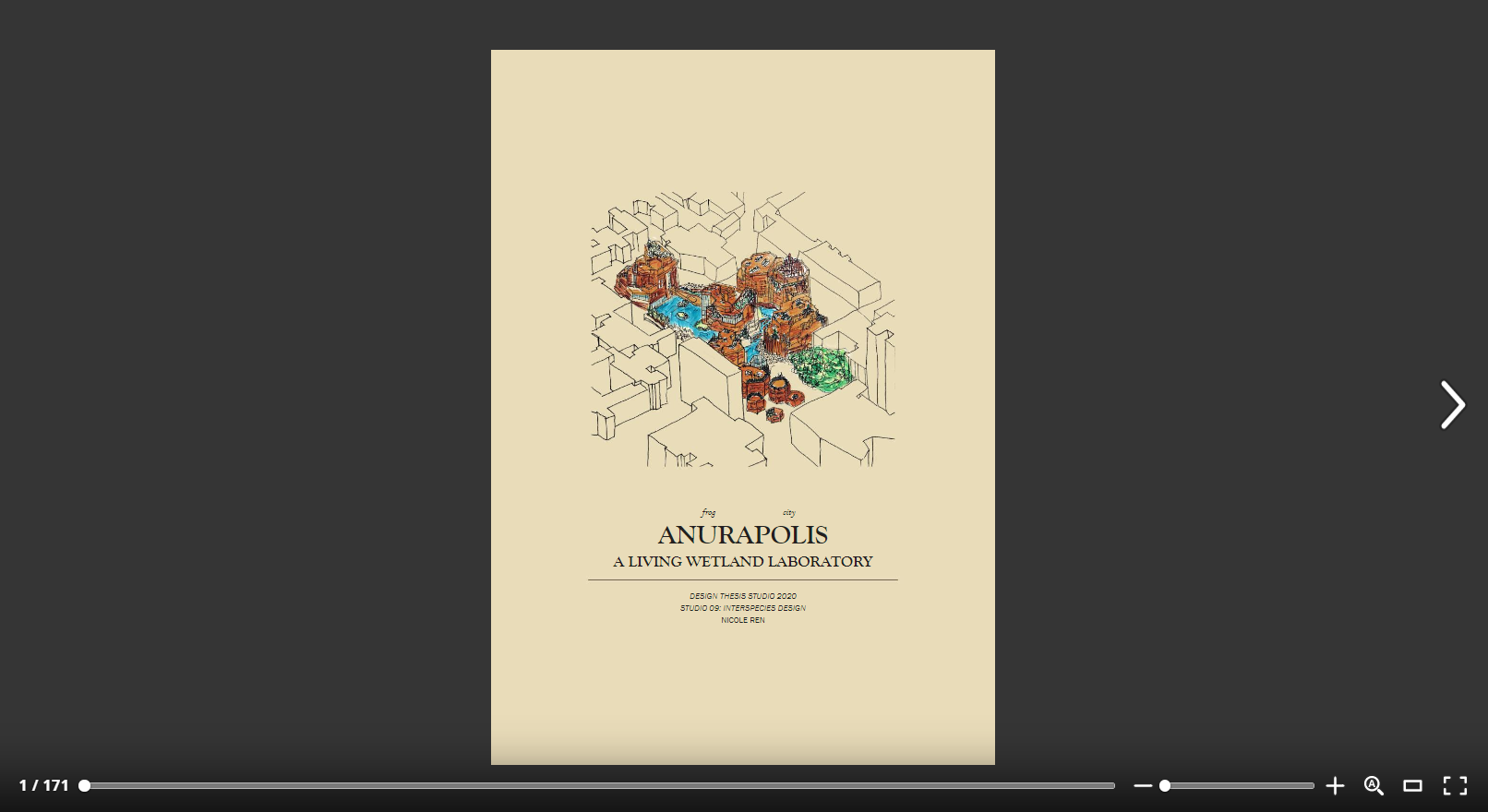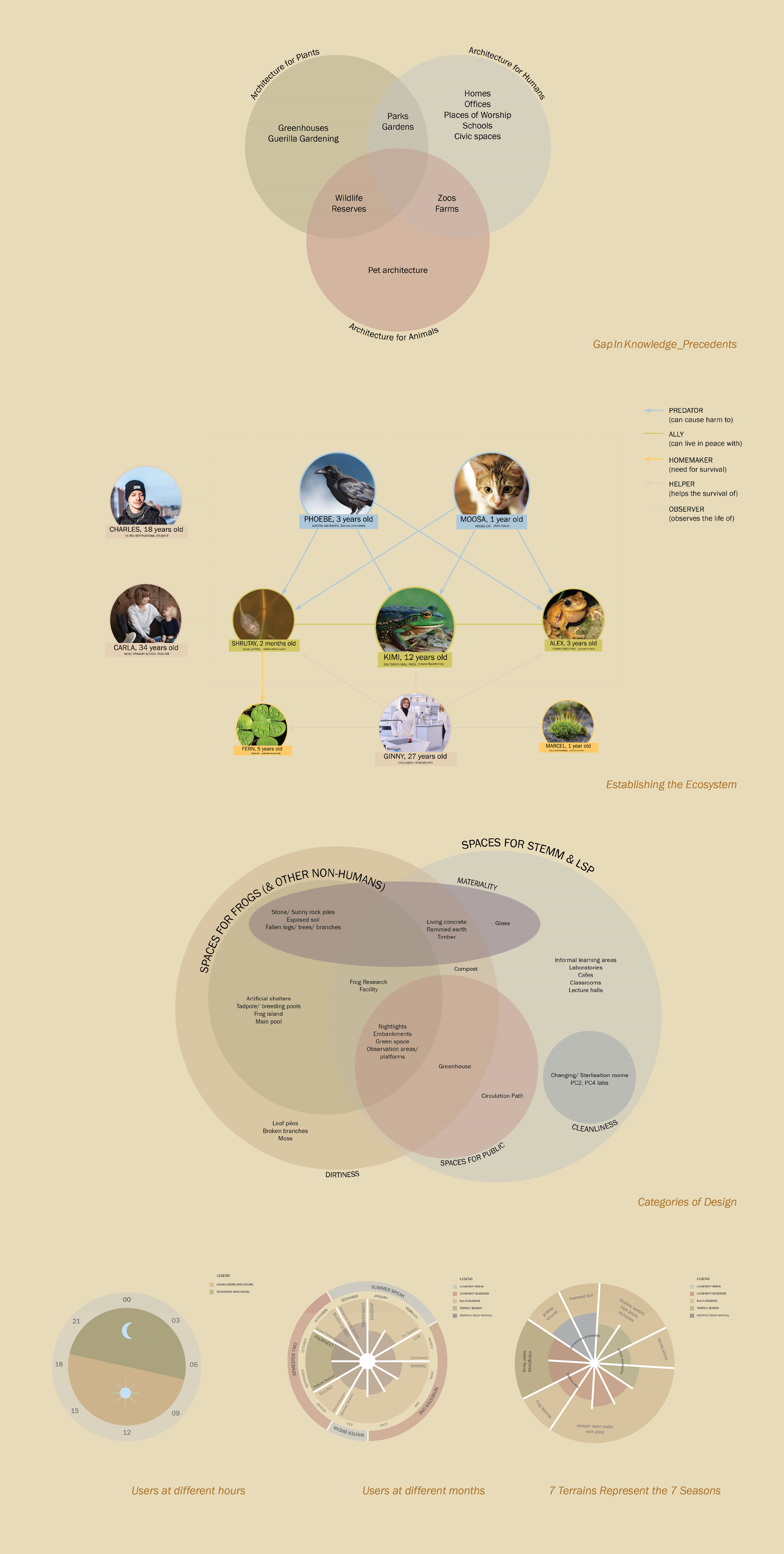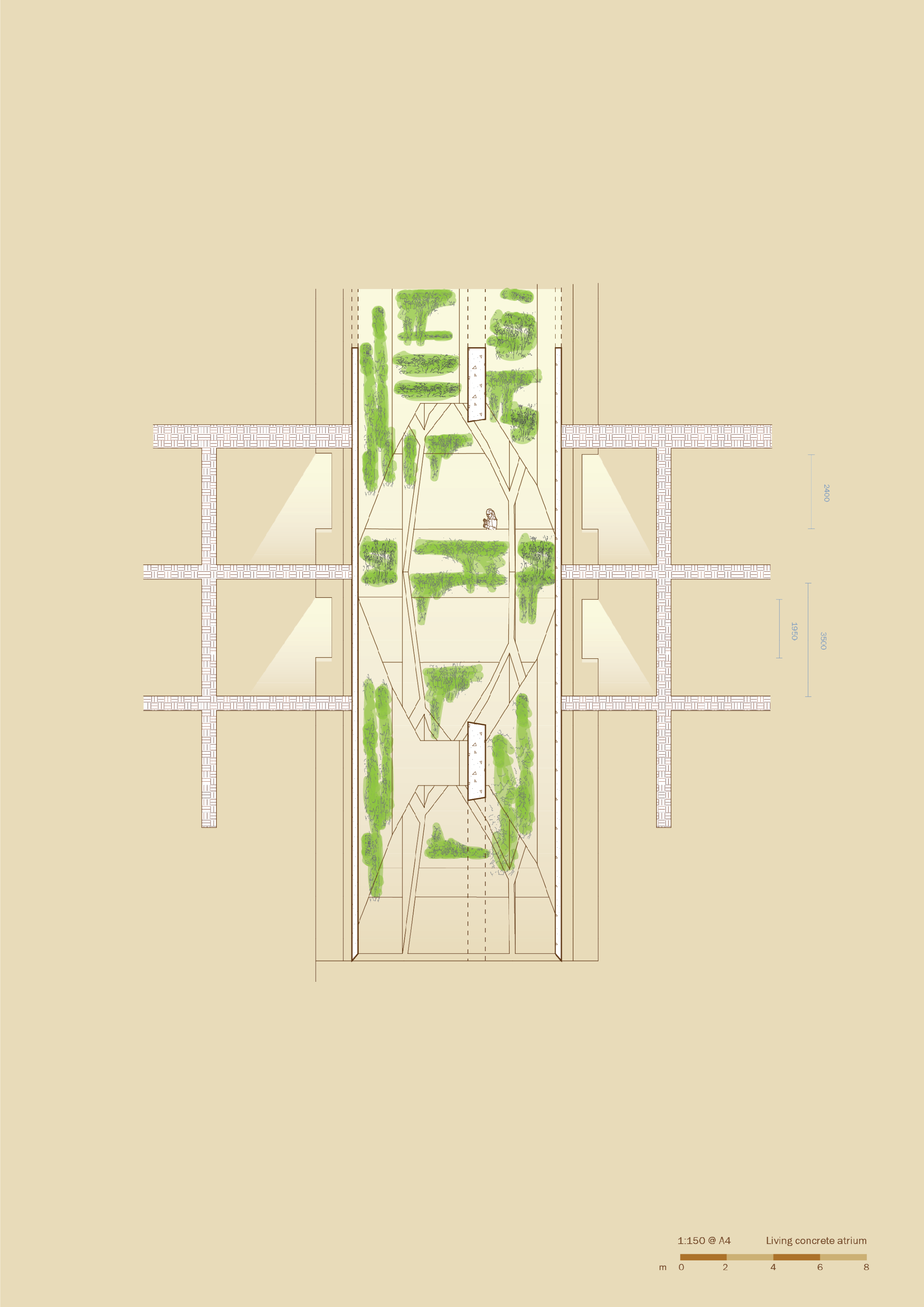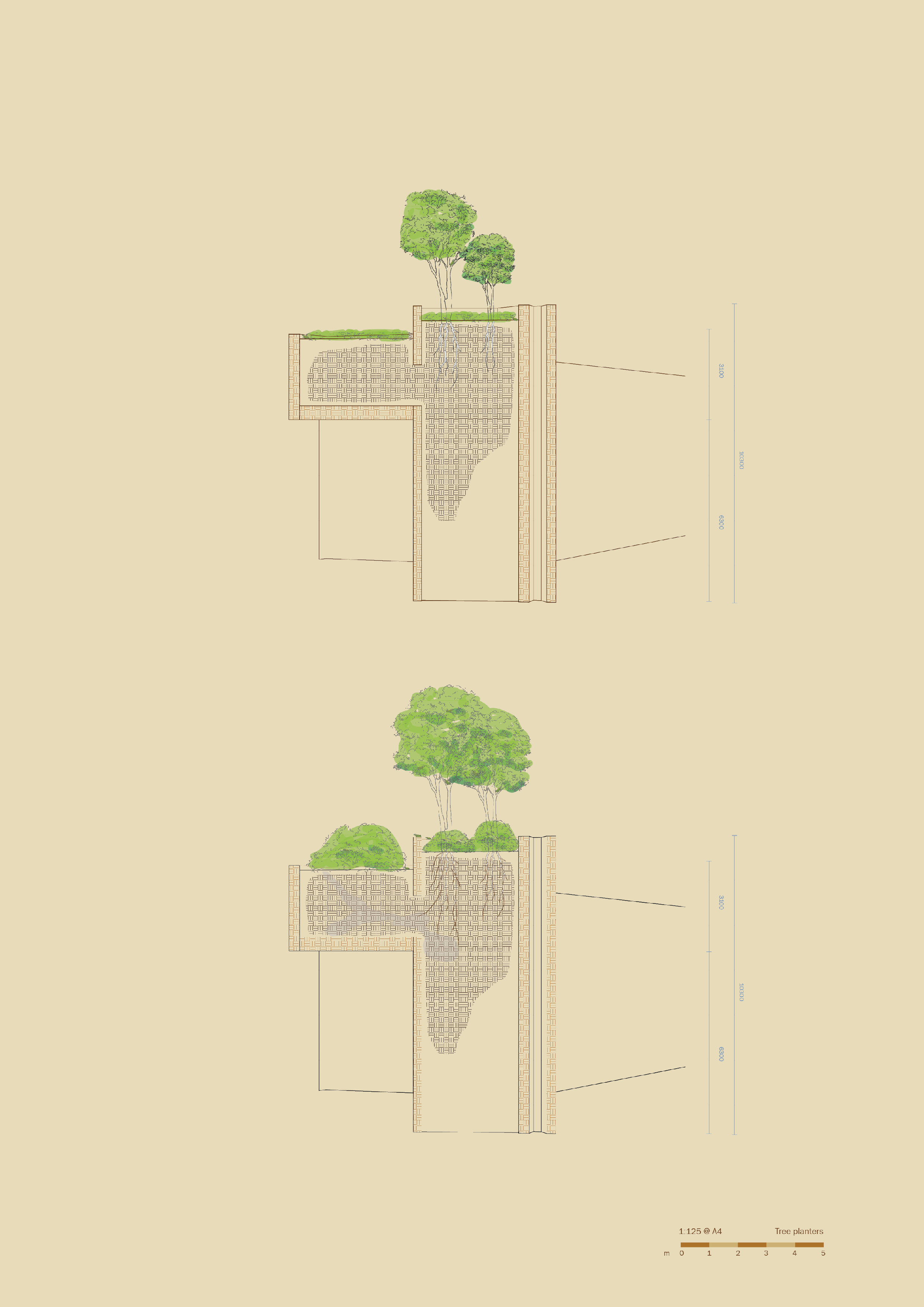Nicole Ren
Anurapolis: A Living Wetland Laboratory
Welcome to Anurapolis! Anura meaning frog, and Polis meaning city in Ancient Greek. Here in the middle of one of Australia’s top institutions and soon to be world-class frog research facility is a throbbing hubbub of wildlife and a new urban wetland made from rammed earth and living concrete, created for the local frog species to dwell and enjoy their days.
With global urbanisation rapidly expanding and driving wildlife from their homes, humans are quick to eliminate all nonhuman life from their built environments. As buildings are designed to purposely keep nature out, and major waterbodies are enveloped with impervious terrains, the global frog population is suffering significantly from habitat loss as well as from a fatally contagious fungus called Chytrid. Anurapolis wants to change that and to reintroduce dirt and nonhuman life back into our lives.
Anurapolis utilises the existing Hassell brief and the site of University of Melbourne’s Union House as a living wetland laboratory that will serve as a pedagogical tool for the Faculty of Life Sciences, a dedicated frog research facility, and a monitored haven for local frogs (and other nonhumans) to begin to replenish their species. It explores how reconstructing the pre-existing biome of the urban environment can teach us about the interspecies potential before human intervention and environmental degradation. This will result in novel and innovative architectural design and construction that encourage the inclusion of more-than-human communities and promote eco-centric lifestyles for the human users of the site, particularly through exploring the themes of dirt/ cleanliness, darkness/light, time, and wilderness/ tidiness, to the benefit of nonhumans in the built environment.
Several key architectural interventions were introduced to benefit the flourishing of more-than-human communities. Anurapolis aims to integrate not just our students, researchers and public, but animals and plants. The site considers the needs of all human and nonhuman users to maximize the site’s potential through the cross-referencing of hours of the day, where the open ground floor plan returns the site to the nonhumans to roam freely when no humans are around at night; as well as considering the frogs’ breeding and maturation seasons to ensure their survival. Other interventions included reduced artificial-lighting corridors that allowed views over the river, secret frog tunnels to hide from predators, inhabitable facades with ‘cracks’ and valleys that give them places to make their home, and observation bubbles for researchers and the public to get up close to the frogs, as Anurapolis is a place for all to observe and learn! And that concludes our tour of Anurapolis, a living wetland laboratory. I hope you learned a little more about frogs and the ways to integrate wildlife into the built environment to create more-than-human communities. Thank you for visiting!
